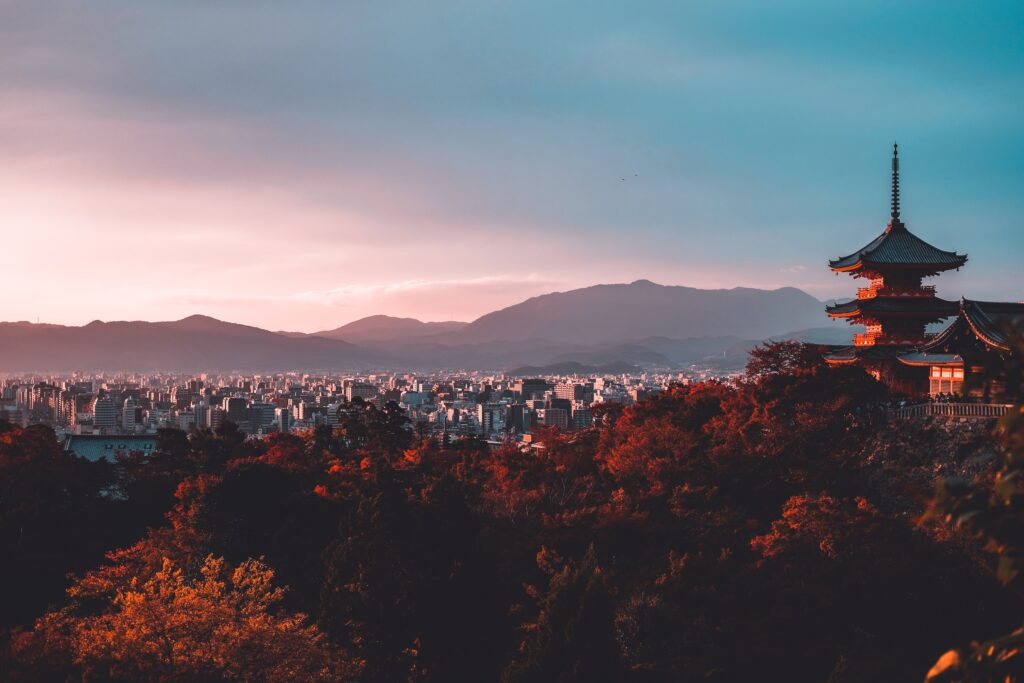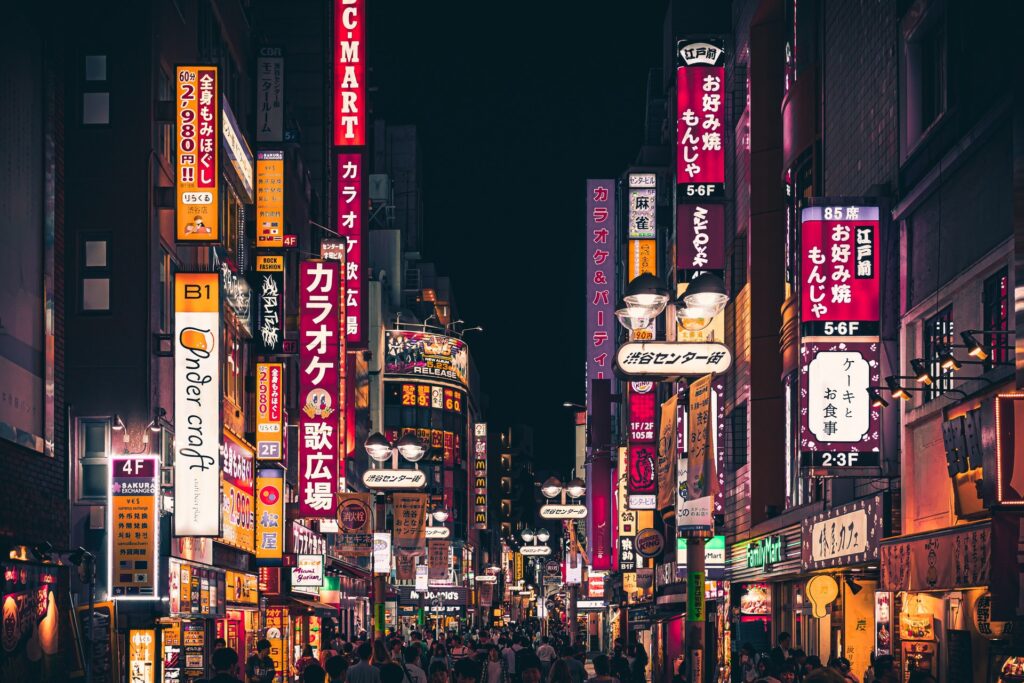Photo by Dick Thomas Johnson, CC BY 2.0 https://creativecommons.org/licenses/by/2.0, via Wikimedia Commons
Let the games begin
The Tokyo 2020 Olympic games have officially begun. Following the lighting of the Olympic flame at the Tokyo 2020 Olympic opening ceremony, the world’s biggest sporting event gets under way.
The opening ceremony of any Olympic games is often a huge global event and Tokyo 2020’s was no different — although for an entirely different reason. The threat of the pandemic loomed over the preparations of the entire games, and as such, was reflected by what was seen over the course of the three and a half hour ceremony. It was unlike any that has come before and hopefully (due to the pandemic) one that we’ll never witness again. In its own way however, it was a beautiful and humble showcase and a privilege to witness.
I want to share my thoughts on the occasion and delve into what was seen throughout the afternoon.
For more information on the Olympics try: The Tokyo Olympic and Paralympic games: Details, schedules, and more
Quick selection
The lighting of the Olympic torch
A modest approach
If you have watched any other Olympic opening ceremonies throughout the years, you may be used to seeing a wealth of colour, excitement, and extravagance; scenes from Beijing 2008 comes to mind with its array of showstopping set-pieces and coordination; the London 2012 games with one of the single longest and most complicated setup highlighting the changing of the eras.
The Tokyo 2020 Olympic opening ceremony had very little of that, on purpose.
Representing the times that the world is currently living in, the opening ceremony was a toned down affair. The covid-19 pandemic was at the forefront of people’s minds and instead of shying away or trying to forget it’s existence, Japan openly acknowledged it; you could even say it was the central focus or theme of the entire ceremony.
At first this seems like a peculiar idea considering the nature of the Olympics, but the build up to the games has been rife with problems and opposition to the point that many question whether they should truly go ahead at all. Burying your head in the sand doesn’t usually end well and would have potentially sent a message of not appreciating the risks involved and being unsympathetic towards public concern. Instead Tokyo 2020 included lots of moments that highlighted the isolation many people have experienced over the last 16 months.
Let’s look at some specifics.
Isolation and togetherness
The Pandemic theme was prominent from the word go. The initial scene was Japanese boxer Arisa Tsubata running alone on a treadmill, who couldn’t compete due to cancellation of qualifiers due to covid; the intentions of Tokyo 2020 were made very clear with this hauntingly relatable symbol.
Moments like this continued in an often sea of blackness; there were no lights in the stands as no spectators were allowed. In the same scene, shockwaves appeared around a handful of other performers who eventually joined in, clearly representing the same isolation but addressing that everyone has felt the same. The mood of the ceremony was often quite sombre but in a reflective way; piano music accompaniment was incredibly elegant and refined as opposed to the high energy we may be used to, but within this atmosphere were some incredible moments.
A personal favorite was when 1824 drones formed in the sky to create the chequered image of the Tokyo 2020 logo, only to swiftly transform into an image of the world. Flying high above the stadium it’s hard not to think of a few things: firstly, it’s quite a technological marvel to be able to create a physical object in the sky as well as the skill required to do so. Secondly, as the image of the world forms, there is a realisation of what the games are all about and why they should certainly be taking place — bringing people together and prevailing in the face of adversity. At least that’s the take I received from witnessing this impressive display.
A nod to tradition
It wasn’t all doom and gloom however. There were moments that played to the wacky Japanese stereotype in the form of a troupe dressed up as an eccentric TV studio team, and a short comedic video of a lighting engineer playing around inside the control booth. These moments were very short-lived and I can’t help but feel a little disappointed as they acted as ‘fillers’.
I would have liked to see a little more of these scenes but at the same time you understand the predicament the organisers are in, walking a fine line between excitement and humour whilst trying to remain respectful and humble.
Still, a rhythmic performance was a key point in the early stages of the show. A number of traditionally dressed carpenters worked away at their individual stations while performing a percussive beat. It shone a spotlight on Japanese woodworkers and the use of wood as a common material in much of Japan. Following a brief interlude by a Japanese tap-dancer, the woodworkers returned with wooden Olympic rings.
This is in honesty quite a special moment that links back over 50 years. In the build-up to the 1964 Tokyo Olympics athletes brought with them seeds from their home country. Japan planted these seeds and from them grew a variety of different trees. The Olympic rings seen at the Tokyo 2020 Olympic opening ceremony were made from these trees presented soo long ago; most importantly it is a cycle that is going to continue following these games.
It’s a simple but deeply meaningful gesture that made the moment bigger than its on screen representation could allow. It shows that something can be incredibly special without having to be visually profound.
The athletes procession
I suppose I should mention the reason there is an Olympic games, the athletes themselves. When the time came for the athletes procession the atmosphere instantly changed, there was a celebratory vibe, and why not? This was the opportunity that many had sought after for an incredibly long time.
Now, under normal circumstances, this is the point I would normally turn off and take a break; this time however, it felt different, and I was inclined to stay put and watch as all 206 Olympic teams walked out to an almost empty stadium.
You might ask why?
I believe it is a combination of things: you know the circumstances around the games, you’ve seen the representation of isolation from the ceremony earlier, and you know it means a lot to those who have, in all honesty, taken a bit of a risk going to the games. In a sense, I believe you start to feel for the athletes, many of which seemed genuinely pleased to attend. There was something quite heartwarming about it all.
As each team entered the stadium a good number of Japanese volunteers were spread around the site waving and bowing; they kept that up for about an hour and a half and deserve a little praise. The music accompaniment was something I could truly get behind too: a full piece orchestra set in and began to churn out songs from popular Japanese video games. There were some I immediately recognised such as those from Final Fantasy, Sonic, and Soul caliber; however, even if you dont know all of them (which I didn’t) most are powerfully invigorating and atmospheric scores and made the entrances feel triumphant.
The lighting of the Olympic torch
Throughout the entire ceremony, a grand representation of Mount Fuji stood at the side of the stadium with a sphere resting at its peak symbolising the sun. It became clear towards the end of the ceremony that this site would be the cradle for the Olympic flame.
The Olympic torch was passed five times between six sets of people representing current athletes, veteran atheletes, health workers, paralympians, and children, with the final honour being awarded to tennis star Naomi Osaka. Upon arrival at the base of Mount Fuji, a path opened to reveal stairs leading to the sphere at its peak. It was a symbolic moment that marked the end of the ceremony in a similar fashion to how it began.
Ending thoughts
The Tokyo 2020 Olympic opening ceremony was certainly one of a kind. Many others before it would show off the host country’s heritage, uniqueness, and capability of hosting a global event in an often outlandish manner, Tokyo 2020 couldn’t be more different. There was modesty and reservedness to the entire ceremony that showed a quiet beauty, much like Japanese ideas of Shibui.
In my own selfish way, I would have liked to have seen more elements that did show Japan’s heritage and uniqueness to help get more excited about the country and its moment on the world stage; however, looking at it in an objective manner, Japan did the right thing in scaling back its showcase.
At a time when millions of people have been affected by the current situation, acknowledging the hardships and making the focus on bringing people together instead of upon itself, could in fact be the best decision this Olympic committee has made (following a host of blunders). It could mean that when we look back at the Tokyo 2020 Olympics; instead of saying ‘Tokyo hosted a great Olympics’, we might say ‘2020 was a great Olympics that just happened to take place in Tokyo’.
Nathan

